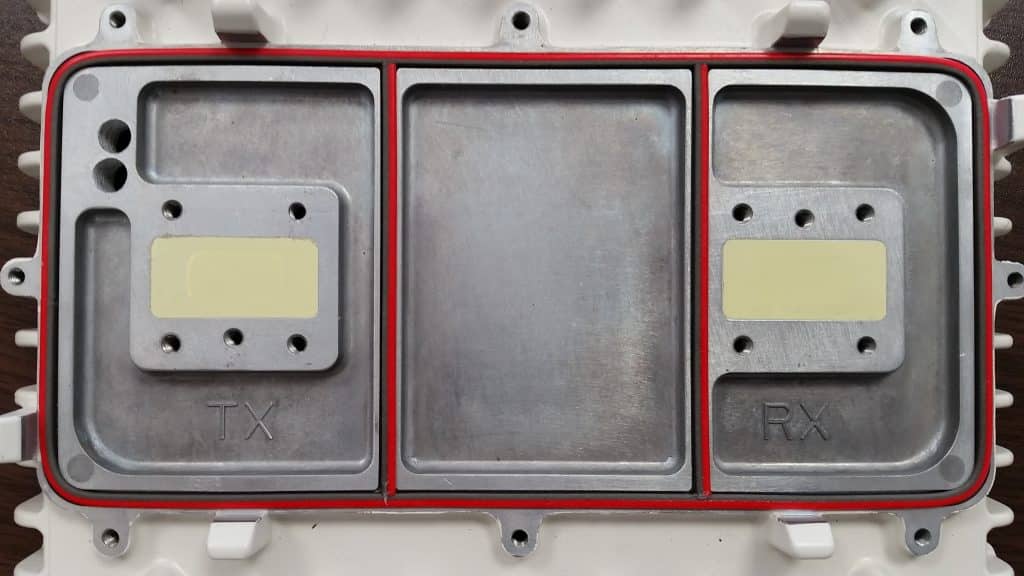The base station shell is generally an aluminum alloy die-casting part. In order to achieve overall electromagnetic radiation protection, it is necessary to use EMI conductive elastomer to connect the die-casting joints. The EMI shielding forms the aluminum alloy base station shell into a continuous conductor, and the electromagnetic wave is confined inside the base station through the eddy current effect and reflection effect of the conductor, thereby preventing electromagnetic wave leakage and radiation. For 5G high-frequency communication, the electromagnetic shielding effect of the conductive silicone strip is mainly achieved by the eddy current effect. sex. In addition to electrical conductivity, conductive silicone strips must meet specific mechanical properties to meet practical application needs. For example, base station integrators have strict requirements on tensile strength, tear strength, elongation at break, and compression set. The working environment of outdoor base stations is relatively harsh, such as long-term high temperature, severe cold, humidity and corrosive environment, which may cause the performance of conductive materials to deteriorate. Therefore, EMI shielding must be able to withstand strict environmental aging tests.

Electromagnetic shielding materials, the application of conductive silicone strips in 5G base stations
In addition to the overall shielding of the base station housing with conductive rubber strips, the electronic components also need to be partially electromagnetically shielded inside the base station to prevent mutual interference of signals. Form in place (FIP for short) can accurately apply conductive adhesive to the required parts. The process is simple, it can be formed on complex surfaces, and the material utilization rate is high. It is very suitable for local electromagnetic protection of base station equipment. The conductive adhesive is applied to the required parts by the FIP process, and after curing, a “wall” that is both conductive and elastic is formed, so as to play the role of local shielding.

FIP technology and its application in base station
The electromagnetic shielding materials commonly used by Newtop company in the production of customized communication base stations include electromagnetic shielding high-performance sealing strips, electromagnetic shielding conductive adhesives, and electromagnetic shielding gaskets. The shielding of 5G high-frequency electromagnetic waves puts forward higher requirements for the conductivity of materials, and users also have new requirements for the stretchability of the rubber strip. 5G base station package sealing.

For high-frequency electromagnetic waves, the better the conductivity of the material, the greater the reverse eddy current will be generated, thereby weakening the interference of high-frequency electromagnetic fields. Therefore, the general idea for the development of high-frequency electromagnetic shielding materials is to improve the electrical conductivity of the material. The electrical conductivity of the material can be improved by increasing the conductor content or increasing the electrical conductivity of the conductive powder. However, the improvement of the conductivity of conductive powder has its own bottleneck, and considering the limitation of material viscosity and cost, the addition amount of conductive powder should not be too high. According to the electromagnetic shielding absorption loss formula, the absorption loss is positively related to the electrical conductivity and magnetic permeability, so the use of raw materials with high magnetic permeability is also an effective and feasible solution. For example, the electrical conductivity of metallic nickel is worse than that of noble metal materials such as silver, but the magnetic permeability of this material is relatively high.
